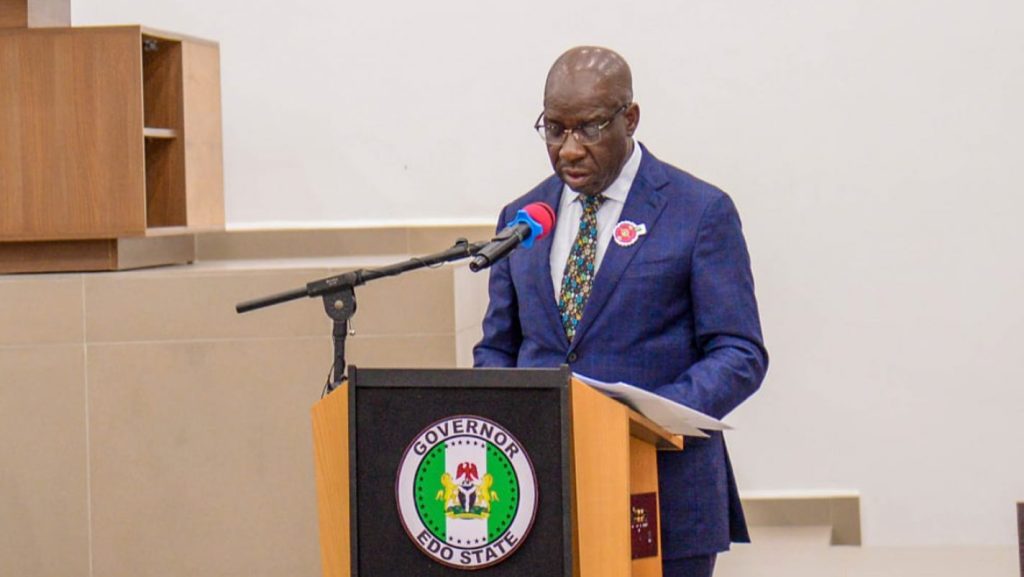Editor’s note:
Apart from serving as a link between primary and tertiary education, secondary schools provide opportunity for the pupil to acquire additional knowledge, skills and traits beyond the primary level. In this three-part picture report, Akoko-Edo Community newspaper editor, Albert Afeso Akanbi and a correspondent a paper, Kehinde Ikoghene Favour, examine the condition of major secondary schools in one of Nigeria’s largest and perhaps the oldest local government area, Akoko-Edo LGA. Relying on information gathered from three premier secondary schools in Ososo, Igarra and Ibillo respectively, they unveil the bitter-sweet story of secondary education in the area today.
One thing that readily comes to mind when indigenes and friends alike, hear the name “Ososo” is beauty, culture, and tourism.
However, our visit to Ososo Grammar School, Ososo, one of three premier secondary schools in Akoko-Edo LGA suggests that Ososo may not be all about beauty after all. OSGRAM as it is fondly called, has produced some of the biggest names to ever come out of Edo State.
And despite the modest efforts of some alumni of the school, towards ensuring that the school meets its purpose of providing an enabling learning environment for our people, standing in the premises of the school, tells a very strong tale of contradiction.
Like many other schools in the local government area, an alumnus of Ososo Grammar school had influenced the Nigerian Communications Commission (NCC) to build one of the IT Labs it distributed across some selected States of the country, in Ososo Grammar School.
In what appeared a proof that government can do whatever it wants to do when funds are available, the lab was built and equipped within a month and handed over to the school. This beautiful mini project however now sits in the middle of an endless sea of rot, decay and dilapidation that is the Ososo Grammar school today.
Mr. Bello Michael Ekemeh, the Vice Principal of the school, speaking on behalf of the Principal, told us that like other schools around Akoko-Edo LGA, the story of Ososo Grammar School is the same; no teachers, no learning materials and dilapidated buildings…
Since its founding in 1970, OSGRAM has produced a lot of influential and prominent people who sit today at the commanding heights of industry and other sectors of human endeavour across Nigeria. Some of them still make it a call of duty to give back to the school, in different ways possible.
For example, to aid learning, a library in honour of late Justice Omoluabi was built and equipped in the school premises alongside the Information and communication technology (ICT) centre, built and equipped by the Nigerian Communications Commission (NCC).
The library caters to the academic needs of most students who can’t afford to buy the books they need. The ICT centre covers the needs of students (technology wise) as computers are made available to educate students on computer knowledge and other computer related skills, such as graphics design, typing, programming, etc.
However, the problem is that the students for whom these structures have been built do not or seem unable to make full use of them.
The school librarian who is better known by the moniker S.P explained that one of the reasons for this is that students of this generation, have accustomed themselves to the saying that ‘SCHOOL NA SCAM’, and as such, have lost interest in learning. He also said it was rare to see the library full with students despite the conducive nature of the place.
The ICT centre which houses 20 desktop computers, some air conditioners, a wash room, and a control and storage room, is still not being put to proper use by the pupils. One of the reasons for this is that the state of electricity supply to Ososo Grammar School is usually low voltage and unable to power all the computers at the same time. The provision of a standby generator which should have been helpful, remains a challenge for the school.
Some students we spoke with insist they would rather stay in the comfort of their homes than come to school since the school lacks classrooms to accommodate the large number of students.
Most of the classrooms are in ruins with no doors, windows, ceilings, roofs or chairs for the students to sit on. Going round the school we observed that dilapidated buildings far outnumber the good ones in the school premises.
For the science students, the complaint is the lack of a laboratory not to talk of lab equipment for experiments while for the art students, it is the lack of school hall to host art related events.
After all, said, the general consensus among teachers, students, and parents is that secondary school education in Ososo needs better attention in the area of funding. This will see to better buildings, recruitment of more teachers and the provision of better learning materials.
Also lacking as at now is a conscious effort to educate our youths at home on how best to access and use these facilities. We must catalogue these facilities and connect our children through proper guidance.
Part two and three of this report would focus in detail on this story, using Igarra and Ibillo secondary schools as case study.
Albert Afeso Akanbi is an editor and Kehinde Ikoghene Favour is a correspondent of Akoko Edo Community newspaper.

